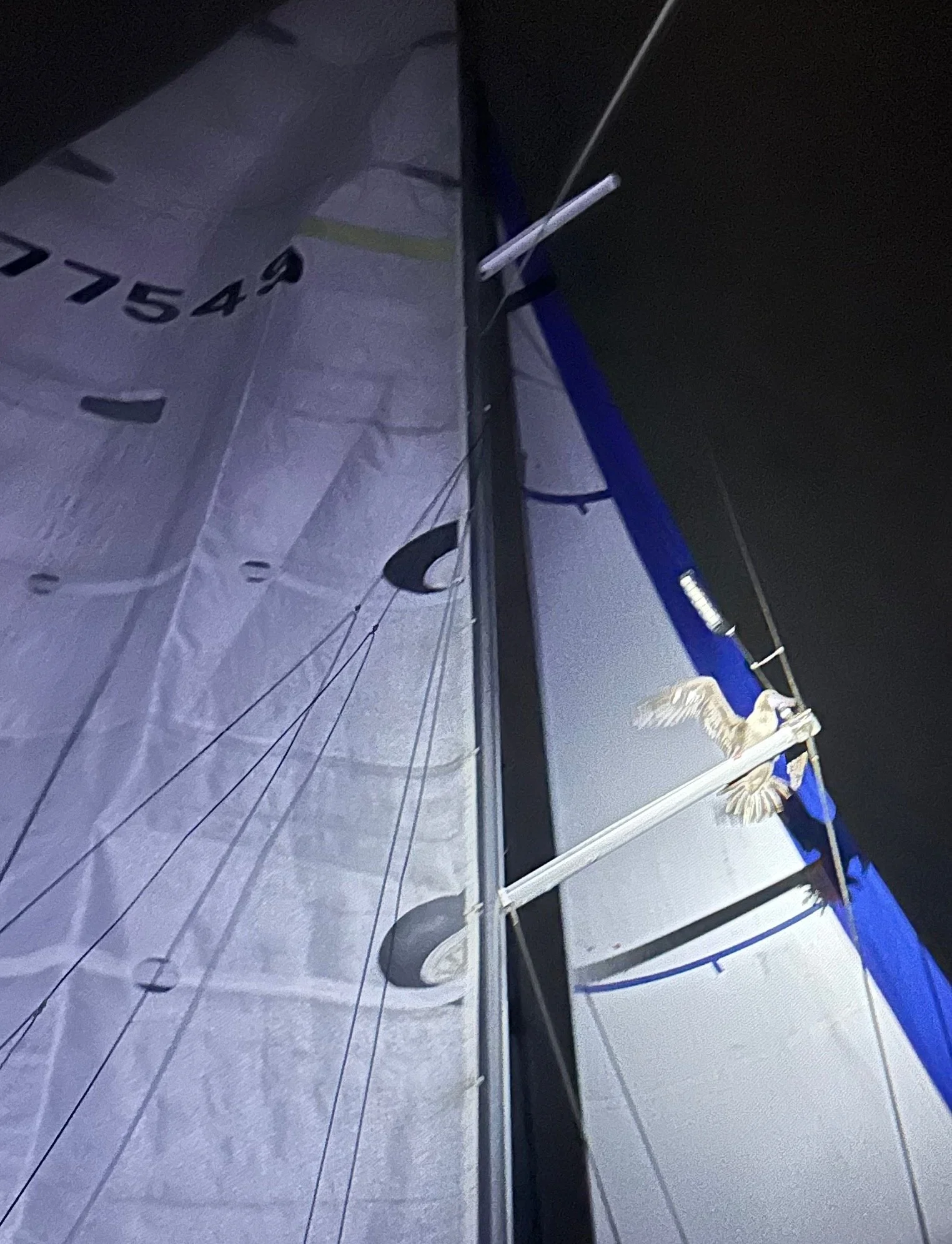Day 9: To gybe or not to gybe? That is the question!
For the first time, I am writing this outside. What a blast! This is because we are experiencing `Champagne sailing’. And I am not talking about the champagne they serve you in economy on long-haul Air France flights. I am talking Ruynart at a minimum, and most likely Krug. What is Champagne sailing in a nutshell? Blue skies, warm air, a course between broad reach and downwind with our poppy-red sym, sun coming down on the horizon… I could go on and on. This is the kind of sailing that justifies 18 months of preparation, tens of thousands of dollars spent, and days of sea sickness for some.
I have not talked about tactics, yet. Mostly because we have followed the principle I stated earlier: sail fast, go west, and see where to go later. Now that we are nearing Hawaii — there are still over 900 nautical miles to go — we need to pay attention to direction. Our course was West and sometimes North West because we followed the wind. The wind kept shifting —last night it wast coming from 100 degrees! — and we need to head more South and point towards Hawaii. Should we gybe? Is it too early?
Last night, we decided to go downwind as much as possible while keeping the same tack by using a technique called sailing by the lee. This is a fairly stable configuration where the main sail is on one side, and the genoa on the other. This allows you to say close to complete downwind and allowed us to somewhat correct our course. We set this up at night after dinner. We took the symmetric spinnaker down, and use the spinnaker pole to place the genoa windward. As usual we decided to keep the staysail (leeward) for additional speed. After a bit of maneuvering, this was all set up correctly and made for smooth and easy sailing. Night shifts were easy and this is welcome as I could see that fatigue was beginning to affect the crew.
Then comes morning and the existential question: to gybe or not too gybe? We decided to go for it. Roll the genoa, pass the pole on the
other side of our forestays and launch the sym. Once again, this operation was executed smoothly and I think the crew is getting better and better at these sort of things. Now point the boat to a decent angle vis a vis the wind and then magic: we are heading straight into Molokai. Hawaii is still very far (see above) but we are now on a straight course to the finish line. If you look at our trace on a map, you will see that it draws what the French call ‘une aile de mouette’, because the trace has the elegance of the contour of the wing of a seagull. I don’t know whether we used model predictive control my colleague and friend Stephen Boyd is so fond of to time our gybe, but it sure looks near perfect to me.
I will discuss the benefits of champagne sailing on your health tomorrow. One thing though. As everything gets easier and enjoyable, I took upon myself to make my laundry. Strange sea happen at sea! You go aft — this is near the transom — with your sea bucket and the magical sailor’s soap. You fill the bucket with sea water, you add soap and then dada: you wash, you rinse, you hang to dry. Yesterday, I wrote a bit about my childhood. It comes back to you. I felt the same as when I was a boy scout washing my clothes in the river near the camp.
Some things keep on amazing me. In the last few days, we have been at least 1,000 miles from the nearest land. And yet, on rare occasions, we see birds. I believe there are from the albatros family. They fly without flapping their wings and can go on and on without ever touching water except to catch a fish after dives that would make Maverick (Tom Cruise) envious. It is quite a spectacle to see these animal operate effortlessly thousands miles away from the nearest perch. They sometimes circle Ruby, get near and then move away and return as if they wanted to play with her. Or maybe they want our foie gras? Last night, a miracle happened. One perched on our spreader (see the photo below or the icon for this blog entry). Wow!












